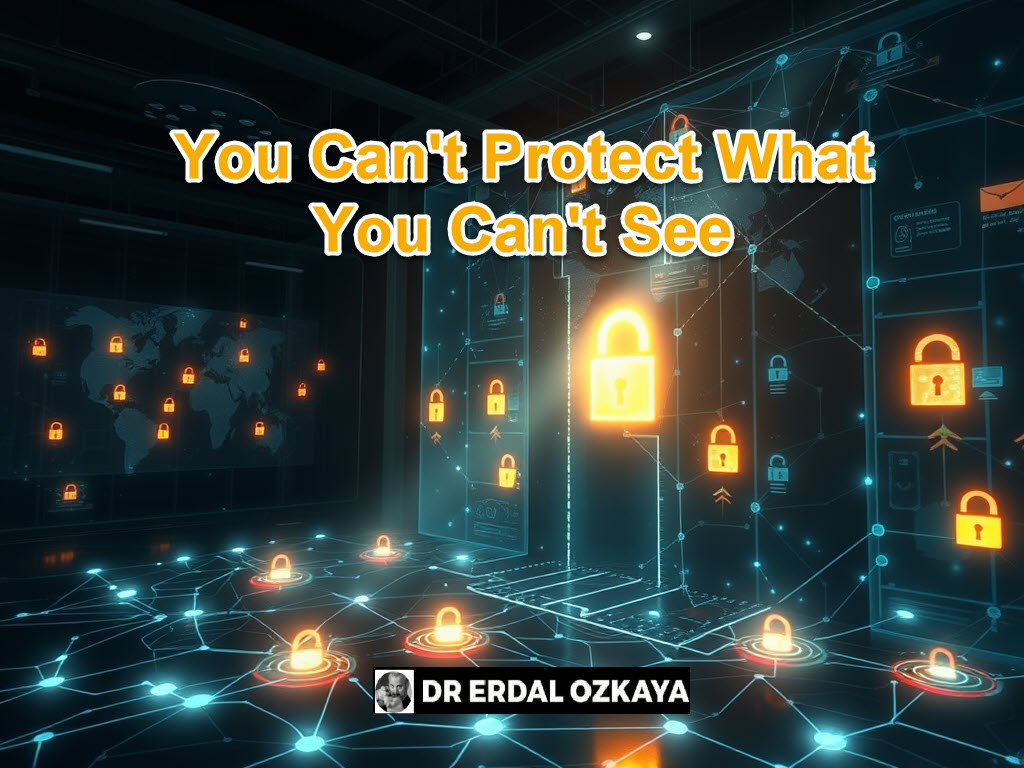You cannot Protect What You Can’t See
“Imagine trying to secure your house in the dark. You wouldn’t know if someone broke in—let alone how to stop them. That’s exactly what it’s like when you try to protect a network without full visibility.”
In cybersecurity, there’s one golden rule:
🔍 You can’t protect what you can’t see.
It may sound simple, but in today’s complex, hybrid, cloud-powered environments, it’s a rule many organizations break—often without realizing it. This article explains why visibility is the foundation of security, what can get in the way, and how your organization can fix it.
Why Visibility Comes First
Before you can defend your network, you must know what’s on it. This is called network visibility, and it includes:
✅ Every connected device
✅ Every data flow
✅ Every application
✅ Every endpoint—on-prem, cloud, hybrid, or mobile
Without this view, your security tools are operating in the dark—blind to potential threats.
Think of it like building a fortress without knowing where the walls or gates are. You can’t guard what you can’t locate
When Encryption Blocks Your View
Encryption is essential. It protects our data, keeps hackers out, and is the backbone of modern digital privacy.
But when misused or misunderstood, it can blind the defenders too.
🔒 Problem: Many organizations encrypt traffic but don’t inspect it
🛑 Result: Malicious actors (like insiders or bots) can hide in encrypted channels
That’s why SSL inspection (aka “break and inspect”) is vital. It allows you to see inside encrypted traffic—responsibly and securely—so you’re not blind to threats hiding in plain sight.
Today, advanced tools let you balance strong encryption and full visibility. You don’t have to choose one over the other anymore.
🛡️ Visibility = The First Layer of Defense🛡️
Just like protecting your home requires multiple layers (locks, cameras, alarms), cybersecurity needs defense-in-depth.
The first and most important layer? Visibility.
If your team doesn’t know:
- Which devices are connected
- What data is flowing
- What’s misconfigured or outdated
…then you’re reacting after an attack, not preventing it.
Tools That Help:
- IP Address Management (IPAM) → See who’s connected, when, and where
- Network Configuration & Control Management (NCCM) → Monitor routers, switches, and access points
- Gain Complete Network Visibility with NEOX Networks
- Use Automated Investigation and Response Platform like Binalyze
Unmonitored devices and forgotten infrastructure are easy targets for attackers.
Shadow IT: The Hidden Threat You Can’t Ignore
Shadow IT happens when employees use tools, apps, or services without IT approval. It’s often done with good intentions—but introduces serious risk.
💡 Did You Know?
1 in 5 organizations has suffered a cyber incident due to Shadow IT.
Common sources:
- Personal devices (BYOD)
- Free cloud apps (like file sharing or AI tools)
- IoT devices that bypass security
With 5G and IoT expansion, this problem is accelerating.
👇👇 How to Combat Shadow IT:👇👇
- Use network monitoring to detect unauthorized apps
- Create clear device and software usage policies
- Implement a Zero Trust model—every device, every user must verify
- Work with business units—not against them—to balance security and agility
🤝 Security should enable productivity, not fight it.

Visibility Is Non-Negotiable
As networks grow more complex and attackers get smarter, visibility isn’t a bonus—it’s essential.
Without it:
- You can’t spot threats before they strike
- You can’t investigate incidents thoroughly
- You can’t enforce compliance and policy effectively
With it:
- You regain control
- You proactively manage risk
- You build stronger defenses—layer by layer
Ready to Take Action?
Here’s how to get started:
- Map every connected device and application
- Implement SSL inspection for encrypted traffic
- Deploy tools like IPAM and NCCM to monitor infrastructure
- Detect and control Shadow IT
- Adopt Zero Trust as a core security principle
🔐 You can’t protect what you can’t see. So see it all—then secure it.
What’s Your Visibility Strategy?
Share your thoughts in the comments:
- How are you gaining full visibility into your network?
- What challenges are you facing with encrypted traffic or Shadow IT?
Key Components of an Incident Response Plan
Keywords
protect what protect what you cant protect what you dont organizations struggle to stay cyber cant implement appropriate controls